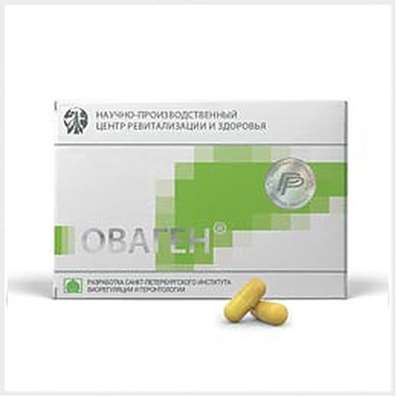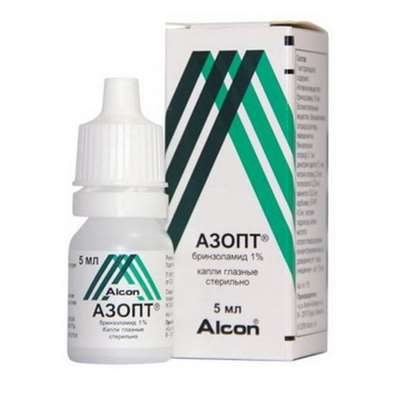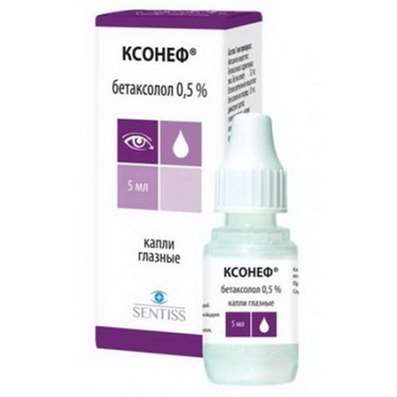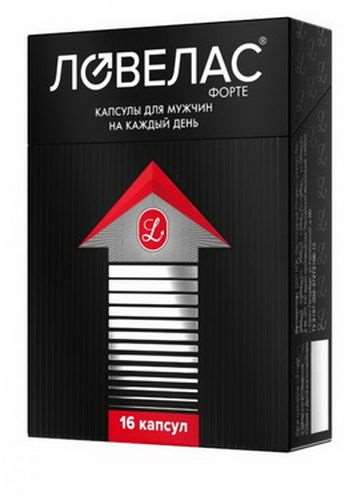Instruction for use: Trental
I want this, give me price
Dosage form: Concentrate for solution for infusion, Film-coated enteric tablets
Active substance: Pentoxyphyllinum
ATX
C04AD03 Pentoxifylline
Pharmacological group
Microcirculatory improver and vasodilator [Antiaggregants]
Microcirculatory improver and vasodilator [Adenosinergic agents]
Microcirculatory improver and vasodilator [Angioprotectors and microcirculation correctors]
The nosological classification (ICD-10)
H34 Vascular occlusion of retina: Arterial thrombosis of the vessels of the eye; Venous thrombosis of the vessels of the eye; Violation of retinal circulation; Disturbances of intraocular circulation; Insufficient blood supply to the mesh and choroid; Occlusion of central retinal vessels; Acute obstruction of retinal arteries; Subacute and chronic circulatory insufficiency in the retina or in the choroid of the eye; Vascular diseases of the retina; Vascular disorders in the retina of the eye; Vascular thrombosis of the retina; Central retinal vein thrombosis; Thrombosis of the central vein of the retina and its branches; Thrombosis of the central vein of the retina of the eye and its branches
H80 Otosclerosis
H81.4 Vertigo of central origin: Vertigo labyrinthine origin; vestibular vertigo; Vertigo of vascular origin
H83 Other internal ear disorders: Disturbance of inner ear function; Violation of the inner ear function of vascular genesis; Disturbances of blood supply to the inner ear; Functional disorder of the inner ear
H91 Other hearing loss: Age-related vascular hearing loss; Age-related vascular drop in hearing; Age-related hearing impairment; Idiopathic hearing loss; Decreased acuity of hearing; Hearing loss; Deteriorating hearing of vascular or toxic origin; Perceptual hearing loss
I63 Cerebral infarction: ischemic Stroke; Ischemic brain disease; Ischemic stroke; Ischemic stroke and its consequences; Ischemic cerebral stroke; Ischemic cerebrovascular accident; Ischemic brain damage; Ischemic brain damage; ischemic conditions; Cerebral ischemia; Acute hypoxia brain; Acute cerebral ischemia; Acute ischemic cerebrovascular accident; Acute cerebral infarction; Acute ischemic stroke; Acute period of ischemic stroke; Focal cerebral ischemia; Ischemic stroke; recurrent stroke; The syndrome of Morgagni-Adams-Stokes; Chronic cerebral ischemia; cerebrovascular stroke; embolic stroke; Ischemic brain damage
I67.2 Cerebral atherosclerosis: Atherosclerosis of the arteries of the brain; Atherosclerosis of cerebral vessels; Atherosclerotic changes in cerebral vessels; Vascular diseases of the brain; Sclerotic ischemic attacks; Sclerosis of cerebral vessels
I69 The effects of cerebrovascular disease: Ischemic and post-stroke condition; Residual effects of hemorrhagic stroke; Residual effects of ischemic stroke; Residual effects of cerebral circulation; Residual effects of subarachnoid hemorrhage; Ischemic stroke; Transferred thromboembolic stroke; The consequence of cerebrovascular accident; The consequence of insufficient blood supply to the brain; Consequences of ischemic stroke; The consequences of a stroke; Postapopleksicheskoe state; post-stroke period; post-stroke syndrome; Condition after stroke; Condition after cerebrovascular accidents; Chronic cerebrovascular insufficiency
I70 Atherosclerosis: Atherosclerosis; Atherosclerosis of peripheral vessels; Atherosclerotic changes; Atherosclerotic vascular changes; Atherosclerotic disorders; spontaneous; Trombangioz obliterans; Frinlendera disease
I73.9 Peripheral vascular disease, unspecified: angiospasm; Vasospasm / vasoconstriction; vasospastic disorders; Violation of venous microcirculation; Violation of circulation; Violation of peripheral blood circulation; Lack of peripheral blood circulation in the lower and upper limbs; Peripheral arterial occlusive disease; Peripheral arterial occlusive disease in stages III-IV on Fontaine; Peripheral vascular insufficiency; Peripheral vascular lesions; Peripheral vascular disorders; Peripheral circulatory disorder; spasm of artery; angiospasm; Functional peripheral arterial disease; Chronic occlusive disease; Chronic obliterating diseases of the lower limbs; Chronic arterial occlusive disease
I79.2 Peripheral angiopathy in diseases classified elsewhere: diabetic angiopathy; Angiopathy in diabetes; arteriosclerosis diabetic; Pain in lesions of peripheral nerves; Diabetic angiopathy; Diabetic microangiopathy; Diabetic vascular disease; Intermittent angioneurotic disbaziya; Macroangiopathy in diabetes; microangiopathy; Microangiopathy in diabetes mellitus; Tingling sensations in the hands and feet; Coldness in the extremities; Peripheral angiopathy; Peripheral arterial disease; Sclerosis Menkeberga; Chronic obliterating diseases of arteries
I87.0 Postphlebitic syndrome: post-thrombotic venous insufficiency; Postthrombotic disease; Post thrombophlebitic syndrome; Post-thrombophlebitis; Post-thrombophlebitic syndrome; Postphlebitic syndrome; Post thrombotic syndrome; Postphlebitic syndrome (stasis syndrome)
L98.4.2 * Trophic skin ulcer: Varicose ulcer; Varicose ulcers; Cutaneous ulcer; Non-healing ulcers; Trophic ulcer; Trophic ulcer of lower leg; Trophic skin lesions; Trophic after-burn ulcers; Trophic ulcers; Trophic skin ulcers; Ulcer of lower leg; Ulcer of skin; Ulcer of trophic skin; Ulcer on legs; Ulcerative necrosis of the skin; Ulcer of shin; Ulcer of the lower leg; Ulcers of lower extremities; Difficult healing ulcers
R02 Gangrene, not elsewhere classified: Atherosclerotic gangrene; Gangrene; Gangrene of the extremities; The fire of Saint Anthony
R41.8.0 * Disorders intellectual mnesticheskie: Secondary violations mnemonic functions; Difficulty concentrating; The difficulty of mental activity; Intellectual impairment; Intellectual-mental breach; Intellectual-mental disorder; psychic infantilism; Cognitive impairment; Violation of intellectual; Violation of mnemonic functions; Violation of intellectual activity; Violation of thinking; Violation of mental capacity; Violations of intellectual functions; Violations of thinking; Weakening intellectual productivity; Backlog of mental development; Primary disorders mnemonic functions; Lowering the intellectual productivity; Lowering the intellectual-mental functions; distraction; thought disorder; thought disorder; The decline of intellectual efficiency; Reduced intellectual-mental functions; Reducing the intellectual capacity; The decline of mental abilities; The decline of mental abilities in the elderly; The decline of mental function; The decline of mental function; Reduced memory in old age; Reduced mental activity; Reduced intellectual level; The deterioration of intellectual-mental functions; Chronic disorders of mental capacity
T35 Frostbite, affecting several areas of the body and unspecified frostbite
Composition
Trental
Film-coated tablets, soluble in the intestine – 1 tab.
active substance: Pentoxifylline - 100 mg
Auxiliary substances: lactose; starch; talc; Silicon dioxide colloid; Magnesium stearate
Shell: methacrylic acid copolymer; Sodium hydroxide; Macrogol (polyethylene glycol) 8000; talc; Titanium dioxide (E171)
Concentrate for solution for infusion - 1 ml
active substance: Pentoxifylline - 20 mg
Auxiliary substances: sodium chloride; water for injections
Trental 400
Film-coated tablets of prolonged action - 1 tab.
active substance: Pentoxifylline - 400 mg
Auxiliary substances: povidone (PVP); Hyethellosis (hydroxyethyl cellulose); talc; Magnesium stearate
Film membrane: hypromellose (hydroxypropylmethylcellulose); Benzyl alcohol; Titanium dioxide; talc; Macrogol (polyethylene glycol) 6000
Description of dosage form
Trental
Tablets of 100 mg: round biconvex, coated with a coat of white.
Solution for infusions: almost transparent, colorless.
Trental 400
Tablets of prolonged action: oblong, biconcave, covered with a film coat of white color. On the one hand tablets - engraving "ATA"
Pharmacology
Mode of action - Vasodilator, improving microcirculation, normalizing the rheological properties of blood.
Pharmacodynamics
Trental® improves the rheological properties of blood (fluidity) by affecting the pathologically altered erythrocyte deformability, inhibiting platelet aggregation and decreasing the increased blood viscosity. Trental® improves microcirculation in areas of impaired blood circulation.
As an active ingredient, Trental® contains a xanthine-pentoxifylline derivative. The mechanism of its action is associated with the inhibition of phosphodiesterase and the accumulation of cAMP in the cells of the smooth muscles of blood vessels and blood cells.
Having a weak myotropic vasodilator effect, pentoxifylline somewhat reduces OPSS and slightly dilates the coronary vessels.
Treatment with Trental® leads to an improvement in the symptoms of cerebrovascular accidents.
The success of treatment in the occlusal lesion of peripheral arteries (for example intermittent claudication) is manifested in the elongation of the walking distance, the elimination of night cramps in the gastrocnemius muscles and the disappearance of pain at rest.
Pharmacokinetics
Tablets 100, 400 mg
After oral administration, pentoxifylline is rapidly and almost completely absorbed.
After almost complete absorption, pentoxifylline is metabolized. Absolute bioavailability of the initial substance is (19 ± 13)%. The main active metabolite 1- (5-hydroxyhexyl) -3,7-dimethylxanthine (metabolite-1) has a concentration in the blood plasma that is 2 times higher than the initial concentration of pentoxifylline.
T1 / 2 pentoxifylline after oral administration is 1.6 h.
Pentoxifylline is completely metabolized, more than 90% is excreted through the kidneys in the form of unconjugated water-soluble metabolites. Excretion of metabolites is delayed in patients with impaired renal function.
In patients with a violation of liver function T1 / 2 pentoxifylline is extended and absolute bioavailability increases.
Solution for infusions
Pentoxifylline is extensively metabolized in erythrocytes and the liver. Among the most known metabolites, metabolite-1 (M-1; hydroxypentoxifylline) is formed by cleavage, and metabolite-4 (M-IV) and metabolite-5 (M-V; carboxypentoxifylline) - due to oxidation of the basic substance. M-1 has the same pharmacological activity as pentoxifylline. More than 90% of the accepted dose of pentoxifylline is excreted through the kidneys and 3-4% - with feces.
T1 / 2 pentoxifylline after iv injection of 100 mg was approximately 1.1 hours. In patients with severe impairment of liver function, T1 / 2 pentoxifylline increased. Pentoxifylline has a large volume of distribution (168 L after 30 min of infusion of 200 mg) and high clearance of approximately 4,500-5100 ml / min. Pentoxifylline and its metabolites do not bind to blood plasma proteins. With severe renal dysfunction, excretion of metabolites is slowed.
Indications of Trental
Violations of peripheral blood circulation of atherosclerotic genesis (for example, "intermittent" lameness, diabetic angiopathy), trophic disorders (eg, trophic ulcers of the lower leg, gangrene); Frostbite, postthrombotic syndrome, etc. (when using a solution for infusions);
Disorders of cerebral circulation (consequences of cerebral atherosclerosis, such as impaired concentration, dizziness, memory impairment), ischemic and post-insult conditions;
Circulatory disorders in the retina and choroid of the eye;
Otosclerosis, degenerative changes on the background of the pathology of the vessels of the inner ear and hearing loss.
Contraindications
Tablets 100 mg and 400 mg
Hypersensitivity to pentoxifylline, other methylxanthines or to any of the components of the drug;
Massive hemorrhages, extensive hemorrhages in the retina of the eye, hemorrhages in the brain;
Acute myocardial infarction;
pregnancy;
The period of breastfeeding;
Children's age till 18 years.
Carefully:
Severe cardiac arrhythmias (risk of worsening of arrhythmia);
Arterial hypotension (risk of further decrease in blood pressure, see section "Method of administration and dose");
Chronic heart failure;
Peptic ulcer of the stomach and duodenum;
Impaired renal function (Cl creatinine below 30 ml / min) (risk of accumulation and increased risk of side effects, see section "Method of administration and dose");
Severe dysfunction of the liver (risk of accumulation and an increased risk of side effects, see section "Method of administration and dose");
After recently transferred surgical interventions;
Increased tendency to bleeding, for example, as a result of using anticoagulants or in disorders in the blood coagulation system (risk of developing more severe bleeding).
Solution for infusions
Hypersensitivity to pentoxifylline, other methylxanthines or to any of the components of the drug;
Massive hemorrhages, extensive hemorrhages in the retina of the eye, hemorrhages in the brain;
Acute myocardial infarction;
Severe arrhythmias;
Severe atherosclerotic lesions of the coronary or cerebral arteries;
Uncontrolled arterial hypotension;
pregnancy;
The period of breastfeeding;
Children's age till 18 years.
Carefully:
Arterial hypotension (risk of blood pressure lowering);
Chronic heart failure;
Impaired renal function (Cl creatinine below 30 ml / min) (risk of cumulation and an increased risk of side effects);
Severe liver dysfunction (risk of cumulation and an increased risk of side effects);
Increased tendency to bleeding, incl. As a result of using anticoagulants or with violations in the blood coagulation system (the risk of developing more severe bleeding);
After recent surgery.
Pregnancy and breast-feeding
Not recommended. At the time of treatment should stop breastfeeding.
Side effects
For all dosage forms:
In cases where Trental is used in high doses or at high infusion rates, the following side effects can sometimes occur:
From the nervous system: headache, dizziness, anxiety, sleep disturbances, convulsions.
From the skin and subcutaneous fat: hyperemia of the skin of the face, flushing of the blood to the face and upper chest, swelling, increased brittleness of the nails.
From the side of the digestive system: xerostomia, anorexia, intestinal atony.
From the cardiovascular system: tachycardia, arrhythmia, cardialgia, angina progression, lowering blood pressure.
On the part of the hemostasis system and hemopoiesis: leukopenia, thrombocytopenia; Pancytopenia, bleeding from the vessels of the skin, mucous membranes, stomach, intestines, hypofibrinogenemia.
From the sense organs: a visual impairment, scotoma.
Allergic reactions: itching, skin hyperemia, urticaria, angioedema, anaphylactic shock.
Very rare cases of development of aseptic meningitis, intrahepatic cholestasis and increased activity of "liver" transaminases, APF.
For tablets additionally:
On the part of the digestive system: a feeling of pressure and overflow in the stomach, nausea, vomiting, diarrhea.
Interaction
For all dosage forms
Pentoxifylline is able to enhance the action of drugs that reduce blood pressure (ACE inhibitors, nitrates).
Pentoxifylline may enhance the effect of drugs that affect the blood coagulation system (indirect and direct anticoagulants, thrombolytics), antibiotics (including cephalosporins).
Cimetidine increases the concentration of pentoxifylline in the plasma (risk of side effects).
Co-administration with other xanthines can lead to excessive nervous stimulation.
The sugar-reducing effect of insulin or oral antidiabetic agents can be enhanced by taking pentoxifylline (an increased risk of hypoglycemia). Strict monitoring of such patients is necessary.
In some patients, simultaneous administration of pentoxifylline and theophylline may lead to an increase in the level of theophylline. This may lead to an increase or increase in side effects associated with theophylline.
Dosage and Administration
Trental
Trental 400
Tablets 100, 400 mg
Dosage is established by the doctor in accordance with the individual characteristics of the patient.
Inside, swallowing whole, during or immediately after eating, squeezed with enough water.
The usual dose is 1 tablet. Trental® 100 mg 3 times a day, followed by a slow increase in the dose to 200 mg 2-3 times a day. The maximum single dose is 400 mg.
The usual dose is 1 tablet. Trental® 400 mg 2-3 times a day.
The maximum daily dose is 1200 mg. In patients with impaired renal function (Cl creatinine <30 ml / min), the dosage can be reduced to 1-2 tablets. per day.
Trental
Solution for infusions
Dosage is established by the doctor in accordance with the individual characteristics of the patient.
I.V., drip, the dose and method of appointment are determined by the severity of circulatory disorders, and also on the basis of individual drug tolerance.
The usual dose is two intravenous infusions per day (morning and afternoon), each containing 200 mg pentoxifylline (2 amp 5 ml) or 300 mg pentoxifylline (3 amp 5 ml) in 250 ml or 500 ml 0 , 9% solution of sodium chloride or Ringer's solution. Compatibility with other infusion solutions should be tested separately; Only transparent solutions can be used.
Pentoxifylline (100 mg) should be administered for at least 60 minutes. Depending on the concomitant diseases (heart failure), there may be a need to reduce the amount administered. In such cases it is recommended to use a special infuser for controlled infusion.
After a day's infusion, an additional 2 tablets may be prescribed. Trental® 400 mg. If 2 infusions are separated by a longer interval, then 1 table. Trental 400 mg from the additionally assigned two, can be taken earlier (at about noon).
If due to clinical conditions, the implementation of I.V. infusion is possible only once a day, additionally after it, 3 tablets may be prescribed. Trental® 400 mg (at noon - 2 tables and in the evening - 1 table). Prolonged intravenous infusion of Trental - for 24 hours is indicated in more severe cases, especially in patients with severe pain at rest, with gangrene or trophic ulcers (stage III-IV Fontaine).
The dose of Trental® administered parenterally for 24 hours, as a rule, should not exceed 1200 mg of pentoxifylline, and the individual dose can be calculated by the formula: 0.6 mg pentoxifylline per kg of body weight per hour. The daily dose, calculated in this way, will be 1000 mg of pentoxifylline - for a patient with a mass of 70 kg and 1150 mg of pentoxifylline - for a patient weighing 80 kg. In patients with renal insufficiency (Cl creatinine <30 ml / min), it is necessary to reduce the dosage by 30-50%, which depends on the individual tolerance of the drug to patients.
For all dosage forms, the dosage is set by the doctor in accordance with the individual characteristics of the patient. Dose reduction, taking into account individual tolerability, is necessary in patients with severe impairment of liver function. Treatment can be initiated in small doses in patients with low blood pressure, as well as in people at risk because of the possible reduction in blood pressure (patients with severe CAD or with hemodynamically significant stenoses of cerebral vessels). In these cases, the dose can be increased only gradually.
Overdose
Tablets 100, 400 mg
Symptoms: dizziness, urge for vomiting, falling blood pressure, tachycardia, arrhythmia, redness of the skin, loss of consciousness, chills, areflexia, tonic-clonic convulsions.
Solution for infusions
Symptoms: weakness, sweating, nausea, cyanosis, dizziness, lowering blood pressure, tachycardia, fainting, drowsiness or agitation, arrhythmia, hyperthermia, areflexia, loss of consciousness, tonic-clonic convulsions, signs of gastrointestinal bleeding (vomiting like coffee grounds).
Treatment: symptomatic, special attention should be directed to maintaining blood pressure and respiratory function. Convulsive seizures are removed by the introduction of diazepam.
When the first signs of an overdose (excessive sweating, nausea, cyanosis) immediately stop taking the drug. Provide a lower position of the head and upper body. Follow the free patency of the respiratory tract.
Special instructions
Treatment should be carried out under the supervision of AD.
In patients with diabetes mellitus, who take hypoglycemic drugs, the administration of large doses can cause severe hypoglycemia (dose adjustment is required).
At appointment simultaneously with anticoagulants it is necessary to watch carefully indicators of a coagulating system of a blood.
In patients who have recently undergone surgery, systematic monitoring of the level of hemoglobin and hematocrit is necessary.
The administered dose should be reduced in patients with low and unstable blood pressure.
In elderly people, a dose reduction may be required (increased bioavailability and reduced rate of excretion).
The safety and efficacy of pentoxifylline in children have not been adequately studied.
Smoking can reduce the therapeutic effectiveness of the drug.
The compatibility of a solution of pentoxifylline with the infusion solution should be checked in each case.
When carrying out intravenous infusions the patient should be in a prone position.
Release form
Tablets coated with enteric film coating, 100 mg. In the blister is 10 pcs; In a pack of cardboard 6 blisters.
Concentrate for the preparation of solution for infusion. In ampoules of 5 ml. In a pack of cardboard 5 amp.
Tablets of prolonged action, film-coated, 400 mg. In the blister is 10 pcs; In a pack of cardboard 2 blisters.
Manufacturer
Aventis Pharma Ltd. (India).
Conditions of supply of pharmacies
On prescription.
Storage conditions of Trental
In a dry place, at a temperature of no higher than 25 ° C.
Keep out of the reach of children.
Shelf life of Trental
4 years.
Do not use after the expiry date printed on the package.

 Cart
Cart





